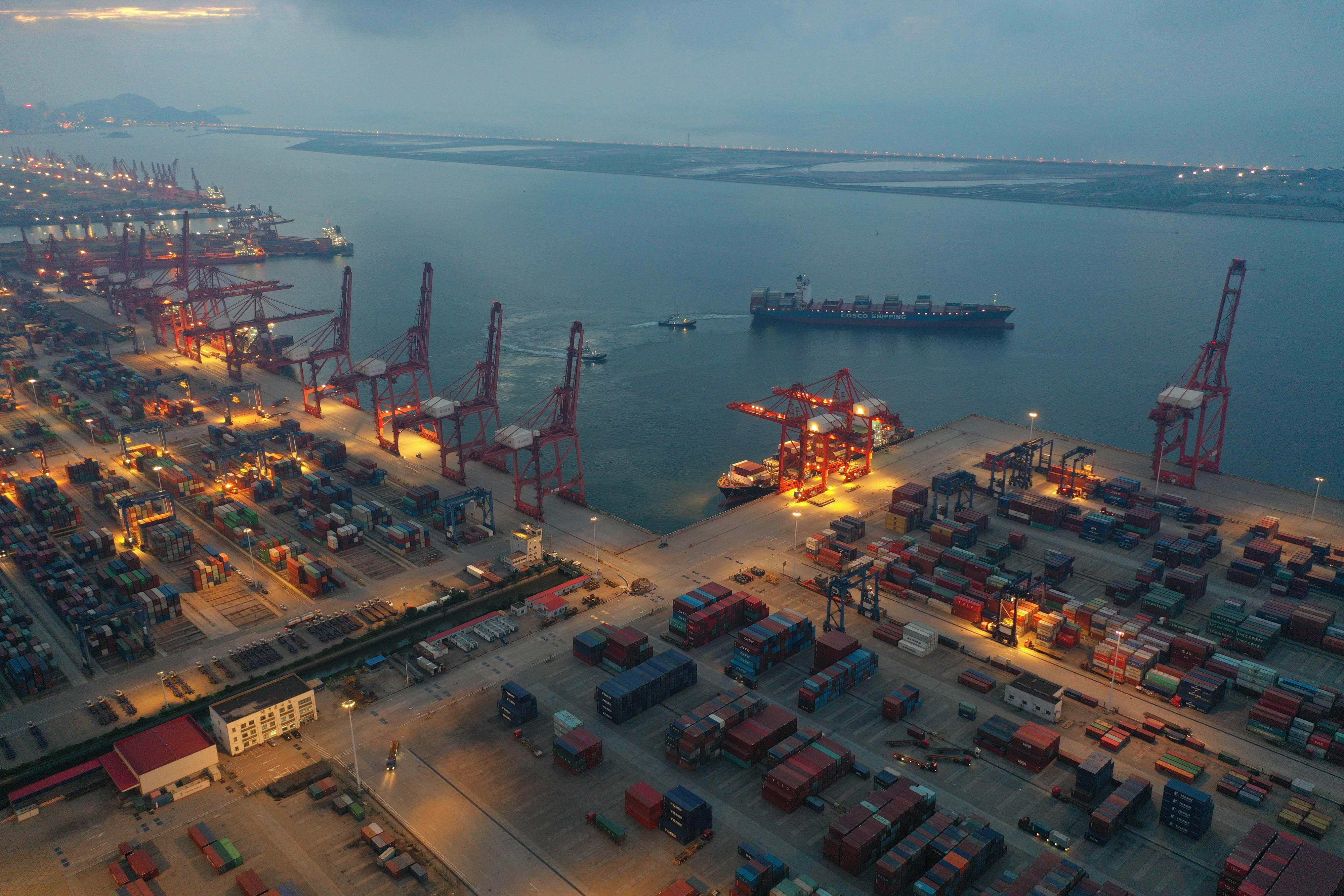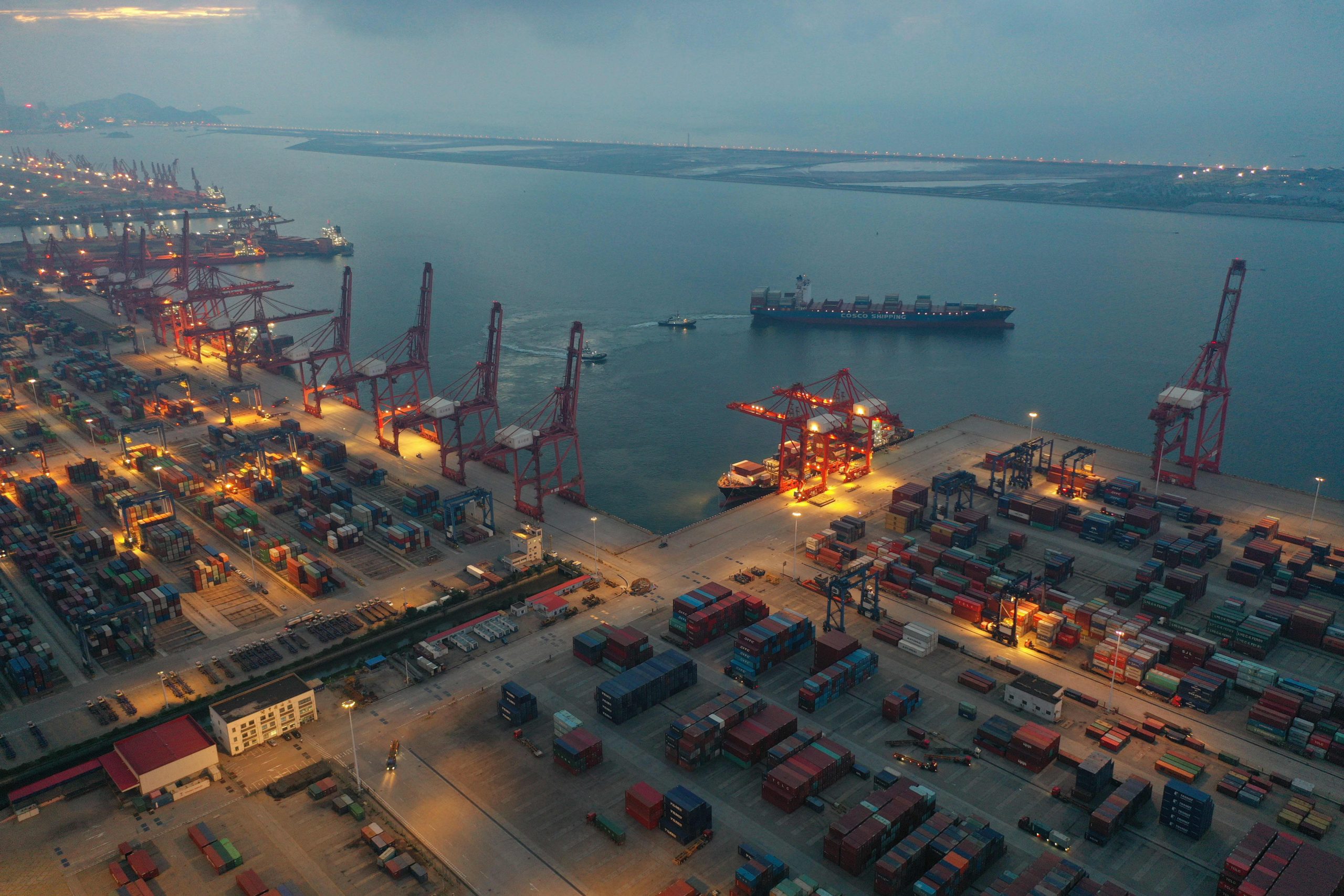
A ship leaves a container port in the evening in Lianyungang in east China’s Jiangsu province Thursday, July 22, 2021.
Feature China | Barcroft Media | Getty Images
BEIJING — Chinese companies wanting to go global are running into shipping problems.
Access to cheap manufacturing at home gave Chinese businesses an advantage overseas. But it’s turning into a disadvantage now, as the pandemic and trade tensions disrupt international supply channels.
Many goods can’t be shipped out, said Fang Xueyu, vice president of international marketing and general manager for Asia-Pacific at Chinese home appliance company Hisense.
The cost of shipping containers has climbed five-fold from about $3,000 to as much as $15,000 each, while it takes about a week longer for them to get to Europe, she said in a Mandarin-language interview last month.
From the Suez Canal congestion in March to the re-emergence of Covid cases around a major Chinese export hub in Guangzhou in June, logistical disruptions have hit global trade one after the other.
“What you have in Europe, what you have around the world, I wouldn’t call it chaos, but a lot of disturbances in the logistics system,” said Alexander Klose, executive vice president of overseas operations at Chinese electric car start-up Aiways.
“So we had to rebook shifts, we had to delay shifts, because no ships were available, no containers were available. That definitely impacted us,” he told CNBC in an interview in June.
For the company, which makes its cars in China and sells them to Europe, Klose said the disruptions “delayed some shipments by two, three months just because cars were sitting in a port and not being transported.”
Foreign demand for Chinese-made products has remained strong — both by companies’ accounts and official data. The customs agency said in the first half of the year, exports to the European Union rose 35.9% from a year ago to $233 billion, while those to the U.S. climbed 42.6% to $252.86 billion.
Hisense remains keen to expand abroad, and made $7.93 billion in international markets during the pandemic last year. By 2025, the company said it aims to triple the contribution from overseas markets to total revenue to $23.5 billion.
The Chinese multinationals are probably rediscovering what they have known for a long time. Their best growth opportunities are right in front of them.
James Root
partner, Bain
But the shipping delays mark the latest challenge Chinese companies face in trying to reach international markets.
Out of about 3,400 Chinese companies that operate internationally, only about 200 make more than $1 billion in sales overseas, said James Root, a partner at management consulting firm Bain.
“When you dig through it, the early pioneers — the Lenovos, and the Haiers and the Huaweis — to me look more like real exceptions rather than the (avant-garde) who are sort of blazing a trail for lots and lots of Chinese multinationals to follow them overseas,” Root said, referring to three Chinese brands well-known internationally.
These companies tend to “run more of an export model for their international business,” he said. “The Chinese multinationals are probably rediscovering what they have known for a long time. Their best growth opportunities are right in front of them.”
China is the second-largest economy in the world, and many economists predict it will surpass the U.S. to become the largest in the next several years.
Amazon bans, taxes and other risks
Other Chinese businesses selling abroad have run into challenges recently from a crackdown on fake reviews by Amazon.
“We understand that some sellers’ behavior has been deemed in violation of Amazon’s ‘Seller Code of Conduct’ and other terms, (causing) restrictions on operations,” Li Xinggan, director of the foreign trade department at the Ministry of Commerce, said at a press briefing earlier this month. That’s according to a CNBC translation of his Mandarin-language remarks.
He added: “We have always required businesses to abide by each country’s laws and regulations, to respect local customs and habits, and develop operations in accordance with law.”
Chinese merchants may also face higher costs from the EU’s implementation of a new tax policy for goods exported into the region.
“The political, economic, compliance, logistical and personnel challenges that Chinese businesses face when going abroad have significantly increased,” the People’s Daily, the Chinese Communist Party’s official newspaper, said in an article in late June about the latest release of a business association report on the risks for Chinese companies going overseas.
“In recent years, inadequate identification of risks and prevention have become an important problem for Chinese businesses’ (ability) to ‘go out,'” the article said, according to a CNBC translation of the Chinese text.
Alibaba’s air cargo advantage
For Alibaba, a major player in China’s domestic e-commerce market, its strategy to go overseas has included investing in its logistics unit, Cainiao.
Through Cainiao’s partnerships with different companies’ air cargo charters, “we have a stable supply of air shipment to European countries,” said William Wang, general manager of Spain, France and Italy for AliExpress, Alibaba’s international e-commerce business.
He claimed that as a result, sellers on AliExpress have been able to get their products to customers with no extra costs or delays.
However, air freight typically costs far more than cargo shipping, making it impractical for exporting cars or large home appliances.
More overseas warehouses and acquisitions
The logistical challenges mean Chinese companies are going to localize further in international markets.
E-commerce companies have been building or renting warehouse space near customers in Europe, so sellers can pre-ship products for storage there. Once a customer places an order, the product only needs to travel from a nearby warehouse, instead of across a continent.
Figures from China’s Ministry of Commerce indicate Chinese companies have built about 100 new warehouses overseas in the first half of this year, after an increase of 800 last year.
Chinese companies are looking for other ways to establish their presence in overseas markets.
Next year, AliExpress plans to double its staff in France, Spain and Italy from just over 200 people currently, Wang said.
For Hisense, Fang said the company plans more acquisitions and the construction of more factories in different countries — as tariffs make selling China-made products more expensive in some markets, like the U.S.


 Signal2forex.com - Best Forex robots and signals
Signal2forex.com - Best Forex robots and signals




